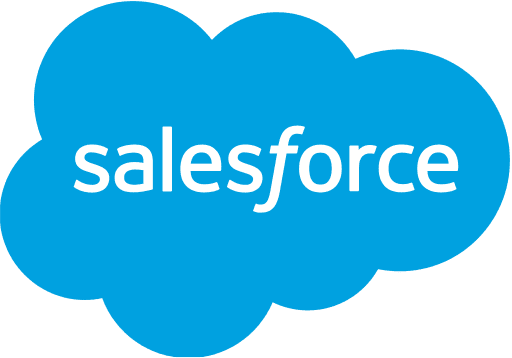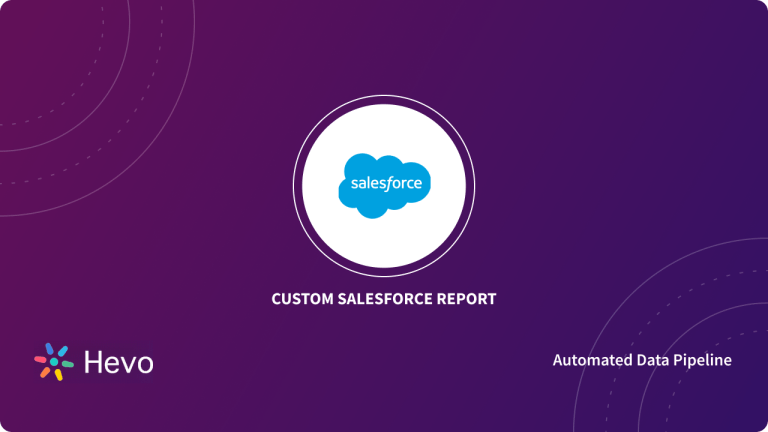The current commercial sector is evolving in a fast-paced environment where innovation and technology are the key driving forces for the success of any business. Companies are constantly trying to outperform each other when it comes to obtaining and retaining clients. In the midst of all this, one factor has proven to be critical in gaining a competitive advantage: Data. How? Well, effectively managing customer data is tricky, especially when you’re dealing with a massive chunk of information. As the years pass by, clients continue to be more diversified, and hence complicating Customer Data Management.
All these factors, coupled with the ever-increasing number of customers turning to Online Platforms for information, have put immense pressure on the Customer Relationship Management (CRM) sector to develop more innovative ways of dealing with customer information.
In this article, you’ll be taken through Salesforce and its Service Cloud Objects. But beforehand, let’s discuss the need for Salesforce in Marketing and Business Departments. It has become apparent that such departments cannot handle vast amounts of data without any help from third-party software. One such tool is Salesforce, a Cloud-Based Platform that offers companies CRM-Based Solutions for their businesses.
In this article, you will be given a brief but comprehensive introduction to one of the most important aspects of Salesforce: Service Cloud Objects. By the end of this article, you should have a rough idea of what Service Cloud Objects are and how you can utilize them to improve CRM. Let’s get started.
Table of Contents
Introduction to Salesforce
For plenty of Entrepreneurs, Business Owners, and Corporations, Salesforce is the king of CRM. Salesforce is the most popular and robust CRM Software used by online businesses. With a name that big, Salesforce CRM doesn’t compromise its reputation.
Salesforce will help you to accomplish several e-commerce goals saving you valuable time by automating a lot of your Marketing Efforts and increasing your Sales. Salesforce lets you monitor and keep track of your Customer’ Data and buying patterns. You can also generate Sales Forecast Reports with Salesforce to convert your Leads. Salesforce also supports Email Integration with applications like Microsoft Outlook, Gmail, etc. They really have just about everything that you could possibly think of when it comes to operations in a business and managing their customers. Salesforce has a variety of pricing options, ranging from $25 to about $300 per user monthly.
Check out our Ultimate Guide on Salesforce.
You can also use Automated Tools like Hevo Data to simplify your Salesforce ETL and further load data from Salesforce to a Data Warehouse of your choice.
Unlock the full potential of your data by using Hevo for integration. Within minutes, you can seamlessly connect Salesforce to your chosen destination, automating your data workflows and gaining real-time insights.
Why Integrate Salesforce with Hevo?
- Automated Data Sync: Automatically transfer data from Salesforce to your preferred destinations without manual intervention.
- Real-Time Data Flow: Keep your financial data up-to-date and consistent across all platforms.
- No-Code Platform: With Hevo’s intuitive interface, you can easily set up and manage your data pipeline with no technical skills required.
Join 2000+ Happy Customers
Industry leaders such as Thoughtspot trust Hevo for its reliable data integration solutions.
Introduction to Salesforce Service Cloud Objects
Salesforce offers enterprises much-needed efficiency and automation when dealing with large Customer Databases. By automating otherwise complicated procedures, the Sales and Marketing Team can focus on other productive areas. However, it is worth noting that understanding Salesforce’s full functionality requires some level of technical know-how. Failing to fully grasp what different aspects of the software offer might leave you at risk of failing to utilize the software entirely. One such aspect of Salesforce is the Service Cloud Objects.
In simple terms, Salesforce Objects form the very foundation upon which Salesforce stands. Given the platform’s complicated nature, these objects are critical and make up the operational structure that drives the platform. But, what exactly are they? They are Digital Tablets that hold crucial data pertaining to organizations. Additionally, they make up some form of structure in the same way that different MS Excel Tablets add functionality to the tool.
Benefits of working with Salesforce Service Cloud Objects
Below are some of the benefits of working with Salesforce Service Cloud Objects:
- By connecting different departments, you get a 360-degree view of Customer Data on an individual level.
- The “Omnichannel Routing” feature allows you to match clients with the most qualified agents to solve their issues.
- Effectively guide your agents through processes using dynamic and adaptive screens.
- Boost work experience by equipping your agents with productivity tools such as “macros” and keyboard shortcuts.
Salesforce Sales Cloud and Service Cloud Objects: The Difference
Before we dive into the nuts and bolts of the topic at hand, it is essential to understand the difference between Sales Cloud and Service Cloud and how the two are related. Upon signing into Salesforce, you will be provided with two options – the Service Cloud or the Sales Cloud. Let’s break this down.
There is a significant difference between these two options. Service Cloud is devoted to companies specializing in selling services and products to clients. On the other hand, the Sales Cloud is focused and designed for enterprises that deal with leads, opportunities, and sales.
It is also worth noting that Service Cloud offers the same objects as Sales Cloud, but with additional licensed features. Below is a list of the objects housed under Sales Cloud:
- Accounts, Contacts
- Leads, Opportunities
- Reports, Dashboards
- Campaigns
- Tasks, Activities
- Products, Assets, Quotes
- Calendars, Events
- Forecasts, Territory Management
- Chatter
- Custom Apps, Tabs & Objects
- Self-Service Portal
- Public Knowledge (via Communities)
- CTI Integration (more service-focused)
- Cases, Solutions
- Visual Workflow
Salesforce Service Cloud Objects
As mentioned earlier, Service Cloud offers additional objects to users upon licensing. Given the scope of this post, we are going to limit ourselves to the Service Cloud Objects outlined below:
1. Service Cloud Console
The Service Cloud Console is a Dashboard-Like Interface designed to reduce the processing time by allowing agents to find, update, or create records quickly. Developers made this tool with the Customer Support and the Sales Representative teams in mind. Agents can use different applications simultaneously, which helps them manage customer requests in a better and efficient way. Agents can also access and edit cases, accounts, and contacts without switching back and forth, which results in easy navigation between the screens.
Using Salesforce Lightning, its development platform, Salesforce included Optimized Lightning Console, Intelligent Case Routing, and Service Wave Analytics in the Service Cloud Console in 2015.
2. Omnichannel Routing
This is a recent addition to Salesforce Service Cloud. Simply put, Omnichannel Routing is an efficient way of directing customer queries across a diverse range of service channels. It is an efficient tool for improving efficiency and boosting customer experience. How? Well, you can configure routing rules to automatically assign customer requests and cases to the most qualified agents.
3. CTI integration
Computer Telephony Integration (CTI) is one of the most popular methods to connect different Organizational Communication Channels, including computer systems and telephones. By using CTI, companies can convert phone conversations into data that they can use for financial benefit. CTI minimizes room for error, especially when dealing with phone conversations with customers since agents do not have to key in information manually.
4. Web-to-Case
This is yet another innovative object that is designed to boost customer experience by significantly reducing waiting time. Web-to-Case lets you gather customer requests directly from your company website and generate a maximum of 5000 cases per day.
Web-to-Case works by generating an HTML snippet that lets users specify requests provided they key in the correct information. You then gather this information directly from the website and direct it to the relevant channels for resolution.
Discover how Salesforce Financial Services Cloud transforms customer relationships and streamlines operations in the financial sector. Learn more at Salesforce Financial Services Cloud.
Conclusion
Above are some of the most common and useful Salesforce Service Cloud Objects. However, the list does not end there. There are several other objects you can utilize, such as the ones listed below:
- Service Entitlements
- Service Level Agreements
- Visual SLA Timelines
- Add-On: Live Messaging
- Add-On: Live Agent
Service Cloud Objects are designed to boost the service offered to customers. By effectively utilizing these features, you stand to gain a competitive advantage over your peers. Data is fast becoming the new currency in the business world. Using Salesforce and its Service Cloud Objects, you can effectively manipulate customer information and find new ways of better serving your clients.
Hevo Data, with its strong integration with 150+ Sources such as Salesforce, allows you to not only export data from sources & load data in the destinations for free, but also transform & enrich your data, & make it analysis-ready so that you can focus only on your key business needs and perform insightful analysis using BI tools. You can easily extract data from Salesforce using Hevo to track the performance of your business and optimize it further to increase revenue.
FAQs for service cloud objects
1. What are objects in the service Cloud?
In Service Cloud, objects refer to data entities that store specific types of information related to customer service operations.
2. What is included in the Service Cloud?
Service Cloud, a part of Salesforce’s Customer 360 platform, includes a comprehensive set of tools and features designed to support customer service and support operations. Key components of Service Cloud include case management, omnichannel routing, service console, etc.
3. Is Service Cloud a CRM?
Yes, Salesforce Service Cloud is a part of Salesforce’s broader CRM (Customer Relationship Management) platform.










